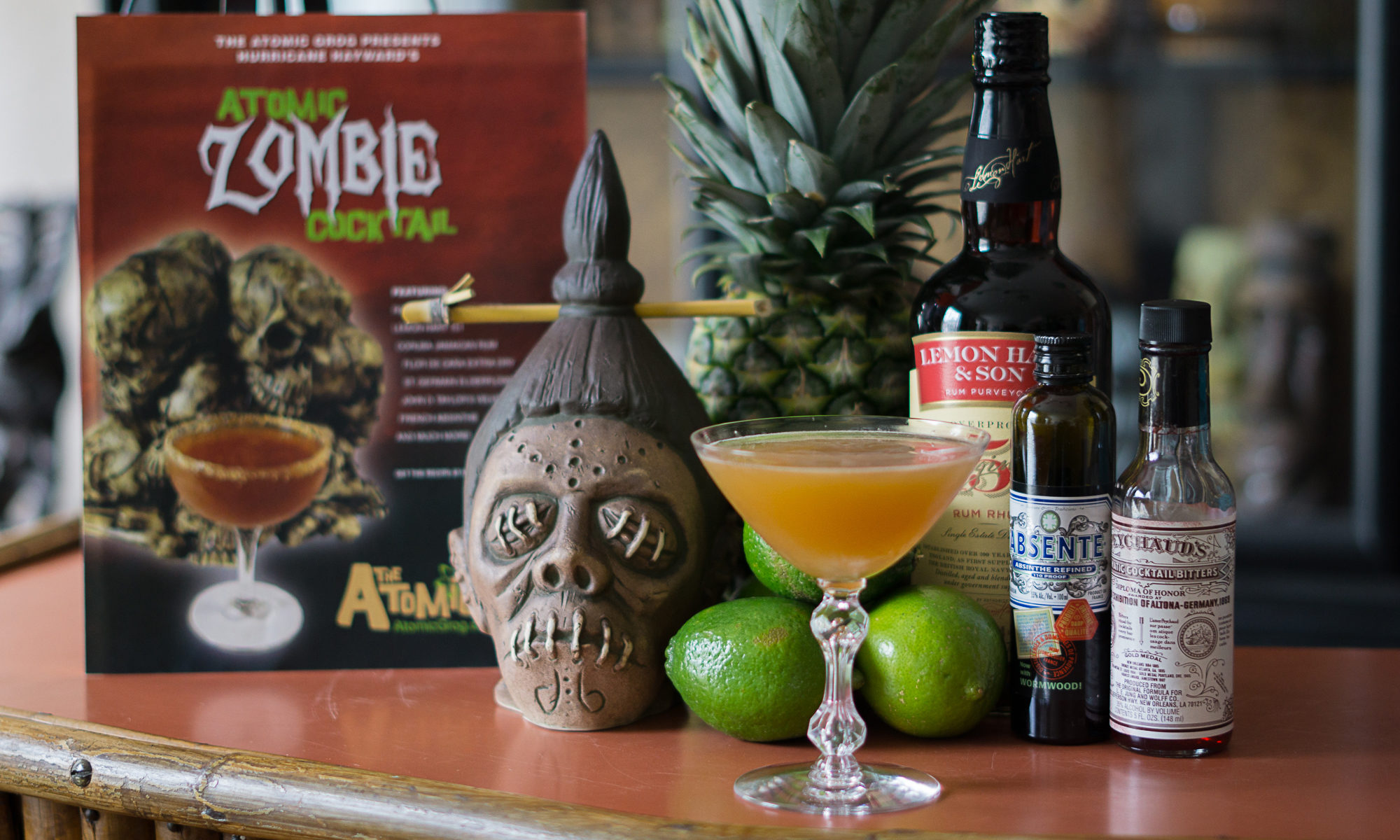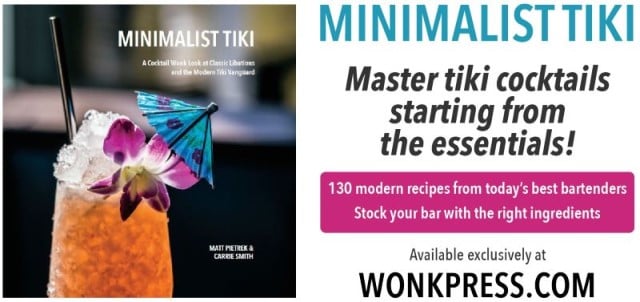The surging popularity of rum was clearly evident at this year’s Miami Rum Renaissance Festival, which again doubled its attendance in its fourth year to more than 8,000 connoisseurs of the cane spirit. The festival was held April 16-22 at the Deauville Beach Resort on Miami Beach, plus other locations around the area.

According to the festival organizers, the attendance total included more than 6,000 ticket holders, around 450 VIP passes, and nearly 900 industry passes. Events included rum tastings, VIP parties, celebrity seminars and much more.
Organized by Robert Burr along with his wife Robin and son Rob, the festival is poised to become one of the largest and most prestigious spirits conferences in the country. The festival “surpassed expectations and served to reinforce our message that rum is enjoying a notable resurgence in popularity,” they wrote in a recap sent via e-mail. “We are showing the world that rum is fun – a delightful component of interaction when friends gather to enjoy life.”
Unfortunately, The Atomic Grog was busy with The Hukilau and two Dick Dale concerts that same week, so our schedule was crammed. But we stopped by on the final day, and we also heard many positive reports from attendees.
Monday’s kick-off party at the Broken Shaker pop-up bar at the Indian Creek Hotel was a big hit. Festivalgoers made the cocktail lounge and speakeasy run by acclaimed mixologists Elad Zvi and Gabriel Orta a regular hangout for the rest of the week.

The Liar’s Club Pop-Up Bar was great … while it lasted. Originally scheduled for four nights in the Deauville’s Jazz Club, the high-energy, Tiki-themed speakeasy was created by the mad geniuses from the tropical dive bar Liar’s Club in Manchester in the U.K. But the experiment came to an end after Tuesday’s debut, a mutual agreement between the Brits and hotel management.
But there were plenty of other social events. VIP parties hosted by the likes of Appleton, Bacardi and Zacapa kept guests busy all week long. And for Wednesday night’s Tiki Time at The Mai-Kai, participants were bused up to the Fort Lauderdale cocktail mecca for a full evening of drinks, dinner and the legendary Polynesian floor show. Some stayed late to party with attendees of the annual Hukilau event.
On Wednesday through Friday, more than 25 experts got down to business during the 2012 RumXP International Tasting Competition, evaluating more than 100 of the finest rums in the world. Click here to see the results of the blind tasting trials.
As the weekend rolled around, it was time for the two-day Grand Tasting events, where dozens of companies offered up rum samples and cocktails in the Deauville’s giant ballroom where the Beatles once performed on the Ed Sullivan show. On Facebook, DJ Mike “Jetsetter” Jones commented that he finally achieved his goal to play the same room as the Fab Four. His tunes added to the festive atmosphere and what seemed like a friendlier vibe than last year’s smaller ballroom. In addition, there was now room for the vendors and the World Tiki Team Championship bartending competition all in the same room.

The Liar’s Club gang got sweet revenge for having their pop-up shut down, joining forces with other top U.K. mixologists to beat the American team in the bartending competition for the third year in a row. Despite an Olympic-sized controversy over a spiked drink, a fun time was had by all. During my quick visit on Sunday, I sampled some tasty cocktails from Appleton, Botran, Don Q, Flor de Caña and a few other lesser known brands. Mojitos and daiquiris were abundant, the smell of mint, lime and rum wafting through the air. I was very impressed by an outstanding daiquiri from Appleton that included the brand’s 12-year-old Extra, lime juice, Demerara sugar syrup and a dusting of coffee and spices.
The studious side of the rum world was explored in the celebrity and trade seminars that were held in smaller conference rooms off the Deauville’s lobby. Quiet and out of the way of the hubbub of the Grand Tasting, it gave novices and experts alike the chance to broaden their knowledge and appreciation of rum. These ranged from presentations by master distillers and brand masters, to the more lighthearted but still very educational presentation that I attended: “The Piña Colada Paternity Test.”
Presented by Ian Burrell, producer of the U.K. RumFest, this multimedia, multi-sensory presentation was fun from start to finish. And it didn’t hurt that Burrell gave early arrivals a complimentary taste of his Havana Club rum, the famous Cuban brand that’s banned in the United States. Burrell also put his illicit hooch to good use in the cocktail samples he made while answering the questions: Who created the Piña Colada? Where was it created? And what rum was used?

The informative seminar lasted several hours and featured many sample cocktails (see photo below). It also served as a very accurate history lesson, beginning with the discovery of the “pined apple” by Columbus’ sailors in the 1500s. They found Taínos indians drinking the fruit’s juice on the island that would later become San Salvador. Burrell traced the precursor to the Piña Colada all the way back to Robero Cofresí (1791-1825), an infamous Puerto Rican pirate who boosted his crew’s morale by mixing their pineapple juice with coconut and aguadiente, an “unrefined spirit” that’s similar to today’s cachaça.
Burrell’s research found the first references to rum being mixed with pineapple juice in 1824. By 1836, this combination had taken Europe by storm, and was referred to as “hot pineapple, rum, and water” in a writing by Dickens. When ice became more common in the Caribbean, the Piña Fria (rum and pineapple juice) was born.
By the turn of the 20th century, with tourism growing in the Caribbean, word spread of these tasty cocktails. Burrell cited a 1906 book that referred to Piña Frias in Cuba and Jamaica containing pineapple, ice, sugar and water.
But what about the name? Burrell’s research found the earliest reference to “Piña Colada” in a 1922 travel magazine, during the dark days of Prohibition in the United States. In this era, writers romanticized about visiting the Caribbean, but they were apparently banned from mentioning alcohol. So there are many references to virgin Piña Coladas.

But Burrell found, and offered samples of, a 1922 recipe for a “Piña Colada” that included pineapple juice, ice, sugar, lime and Bacardi. But where was the coconut that makes the modern drink distinctive? It seemingly died with old El Pirata Cofresí in 1825.
Modern references to coconut being added to this concoction start around 1937. But what kind of coconut? A 1950 New York Times column refers to “Cuba’s Piña Colada” as containing rum, pineapple and coconut milk.
Cubans had actually been enjoying coconut in their drinks for much longer. At the legendary La Florida (later El Floridita), where the daiquiri was popularized in the early 20th century, coconut milk and coconut cream had long been offered as exotic ingredients. But the complicated process to make these mixes could take all day, not very economical for a busy bar.
Then came Coco Lopez, a commercial coconut cream introduced in Puerto Rico in 1954, instantly making the Piña Colada famous and Puerto Rico its modern homeland. Burrell actually recommends the Coco Real brand of coconut cream, which he says is a more natural product.
The birthplace is generally accepted to be the Caribe Hilton’s Beachcomber Bar in San Juan. As early as 1954, bartender Ramón “Monchito” Marrero prepared his Piña Coladas with Don Q rum, pineapple juice and Coco Lopez, serving them inside a pineapple. Less authentic is the claim by Ramon Portas Mingot that he invented the drink in Puerto Rico in 1963. He used Ron Barrilito rum and also added condensed milk. We tried both versions, and while the latter may be richer and creamier, Burrell has no doubt that Marrero is the modern creator.

As always, Burrell mixed humor and first-person stories (including his claim that his father invented the Piña Colada in Jamaica) to make his seminar fun and full of laughs. At the conclusion, he whipped up blender after blender full of his own special version of the Piña Colada – featuring all four rums that he used in the seminar – and passed them around the room in hollowed-out pineapples.
It was a great way to wrap up a rum-soaked weekend and get a little history lesson in the process.
Mark your calendars: Next year’s Miami Rum Renaissance Festival will be held April 15-21.
Official sites
* Miami Rum Renaissance Festival | Facebook page
* Robert Burr’s Rum Guide | National Rum Examiner | Rum Expert Panel
Other coverage, photos
* Bar Life UK: Bacardi UK team wins Miami Tiki-off once again
* New Times: Try these rum brands | 15 rums, 2 cachacas in one hour | Photo gallery
* Huffington Post: Miami Rum Renaissance draws thousands at the Deauville hotel
On The Atomic Grog
* Past Rum Renaissance coverage | Mai-Kai cocktail review: Piña Colada



Great article….You described the Pina Colada history better than me….
But with a lot less flair :>|
Thanks for writing Ian!